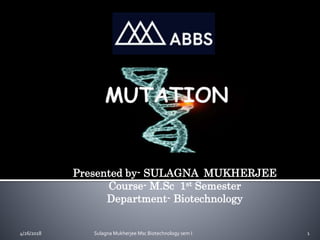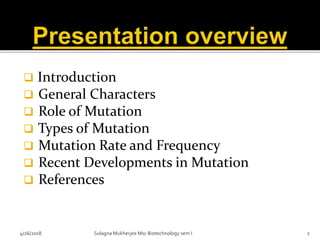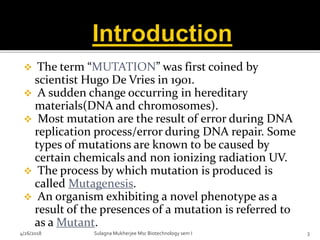The document discusses mutations and their role in evolution. It begins with defining mutations as sudden changes in hereditary materials like DNA and chromosomes. Mutations can occur due to errors in DNA replication or repair and some are caused by mutagens like chemicals and UV radiation. The document then covers different types of mutations like point mutations, insertions, deletions, and chromosomal mutations. It also discusses how mutations contribute to genetic variation and evolution by providing raw materials for natural selection to act upon. The role of mutations in development of antibiotic resistance in pathogens is also mentioned.








































